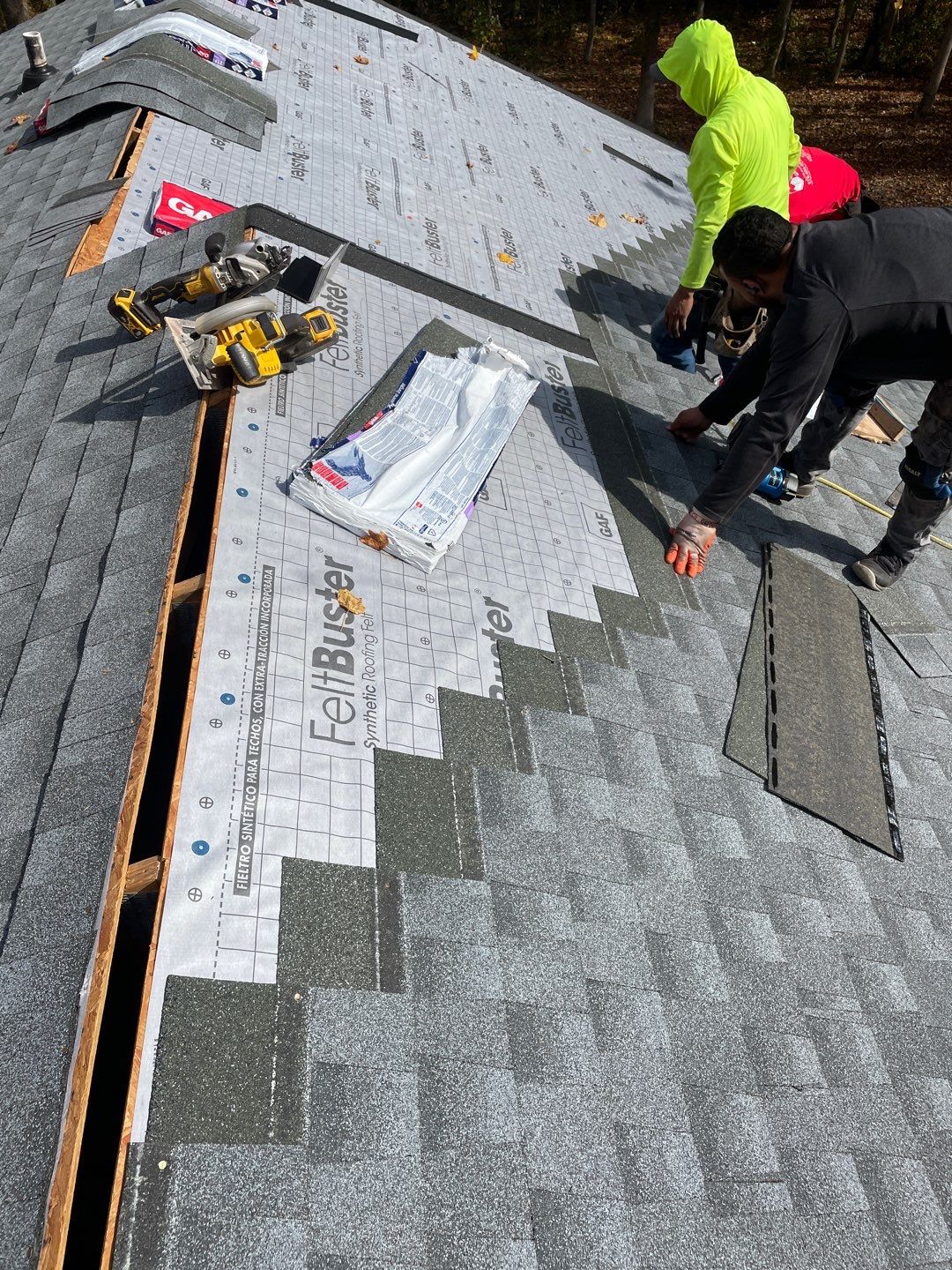Contrasting Costs Amongst Roofing Companies in Gainesville Florida
Wiki Article
Ideal Practices for Ensuring Appropriate Roof Covering Air Flow
A well balanced intake and exhaust vent ratio, frequently 1:300, plays a critical role, with consumption vents preferably positioned at the lower edge of the roofing for trendy air entry and exhaust vents at the optimal for cozy air leave. Maintaining insulation away from vents is critical to protect against air movement constraint.Understand Air Flow Essentials
Appropriately understanding ventilation essentials is essential for making sure the durability and effectiveness of roof. Efficient ventilation mitigates dampness buildup and temperature extremes in the attic, both of which can bring about significant architectural damages over time. A well-ventilated roof covering helps in protecting against common problems such as mold growth, timber rot, and ice dams, which can compromise the honesty of the roof covering products and the underlying structures.The primary goal of air flow is to help with the activity of air, permitting for a regular exchange between the interior and outside settings. This balance is achieved through a mix of intake and exhaust vents that interact to keep optimal air flow. Intake vents, normally located along the eaves or soffits, allow fresh air to go into the attic room room, while exhaust vents, frequently located at or near the roofing system ridge, allow hot, moist air to leave.
Key elements influencing the performance of roof covering air flow include appropriate positioning, sufficient sizing, and making certain that both consumption and exhaust vents are unobstructed. Normal assessment and upkeep are important to recognize possible clogs, damage, or inefficiencies in the air flow system, thus safeguarding the roofing system's efficiency and longevity.
Sorts Of Roofing System Vents
Roofing system vents play an essential function in preserving reliable attic room air flow and, by expansion, the general wellness of the roofing system. Numerous types of roof vents are readily available, each with distinct advantages tailored to certain roof covering requirements.
Soffit vents are set up under the eaves and job in tandem with roof vents to guarantee a well balanced intake and exhaust system. By allowing cooler air to enter from below, soffit vents assist in the expulsion of hot air with top vents. Gable vents, located on the outside walls of the attic room, offer one more efficient service, especially in homes with gable roofs.
Assess Your Present Ventilation

Next, consider the age and problem of your roof covering materials and ventilation components. Older systems may not abide by present building regulations or may have weakened in time, minimizing their performance. Conduct a complete assessment to determine any kind of indications of deterioration, such as corrosion, damages, or voids that could jeopardize the system's performance.
Additionally, gauge the attic room temperature and humidity degrees. High temperatures and moisture can indicate inadequate ventilation.
Installment Best Practices
Reliable setup of roof ventilation systems is paramount for ensuring optimum performance and durability. Appropriate installment begins with recognizing the details air flow demands of the roofing system and the structure it covers. This entails determining the proper ratio of consumption to tire vents, commonly sticking to the 1:300 guideline, which states one square foot of ventilation for every single 300 square feet of attic room floor space.
Intake vents must be set up at the roofing's lower side, commonly in the soffits, view to enable trendy her comment is here air to go into. Exhaust vents, on the other hand, must be installed near or at the roofing's optimal to promote the exit of warm, damp air.
Seal all vent links diligently to avoid air leakages and prospective water infiltration. Use high-quality products and adhere to supplier standards to ensure resilience and performance. In addition, integrating ridge vents with baffles can significantly enhance air movement performance by protecting against wind-driven rainfall and snow from entering the attic.
Ultimately, exact setup of roof covering ventilation systems alleviates potential problems such as mold and mildew development, ice dams, and structural damages, making certain the roofing system's honesty and the building's general health.
Routine Maintenance Tips
Consistency in upkeep practices is basic to making sure the long-term effectiveness of roof ventilation systems. During these evaluations, guarantee that vents are totally free of debris, nests, and other obstructions that could hinder air movement.
Cleaning up the vents is an additional important task. Use a soft brush or a vacuum cleaner to remove dust and debris from intake and exhaust vents. Beware not to damage the air vent screens or louvers throughout the procedure. In addition, check the attic room area for any type of signs of water damages, which might compromise the honesty of the roof covering system.
Proper insulation is similarly crucial. Make sure that attic insulation does not block the vents, as this can severely restrict air movement. If any type of insulation has moved or worked out, reposition or replace it to keep an effective obstacle.
Finally, replace any type of damaged or missing elements immediately. Busted vents, fractured shingles, or deteriorated blinking can all add to poor air flow and ought to be attended to right away. Regular upkeep makes certain that the roof covering ventilation system functions ideally, therefore expanding the life-span of the roof itself.
Final Thought
Making sure proper roofing air flow is critical for preserving the effectiveness and resilience of a roof system. Adherence to the 1:300 consumption and exhaust vent proportion, combined with the calculated placement of vents, is necessary.A balanced intake and exhaust vent proportion, commonly 1:300, plays an essential role, with intake vents preferably placed at the reduced side of the roof covering for trendy air access and exhaust vents at the optimal for cozy air leave. Intake vents, normally situated along the soffits or eaves, allow fresh air to get in her explanation the attic room area, while exhaust vents, typically located at or near the roofing ridge, allow warm, humid air to run away.
Soffit vents are mounted under the eaves and job in tandem with roof vents to guarantee a balanced consumption and exhaust system. By allowing cooler air to get in from below, soffit vents help with the expulsion of hot air with top vents. Adherence to the 1:300 consumption and exhaust air vent ratio, coupled with the strategic placement of vents, is crucial.
Report this wiki page